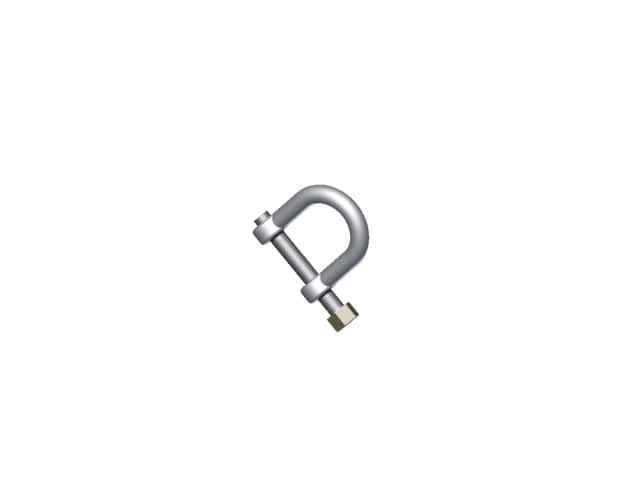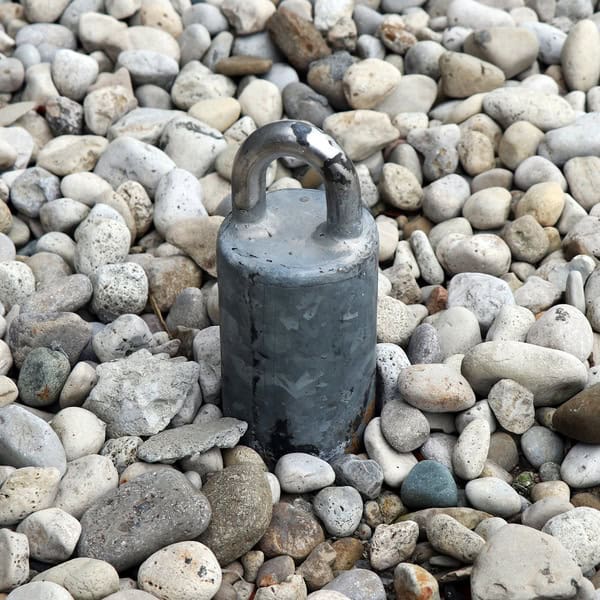A roof anchor is used as a point of suspension or securement for either a fall protection system (such as a horizontal lifeline system) or a fall arrest system (suspended access or window washing system). Roof anchors are made of either steel or aluminum, and the base is customized to be permanently installed into the rooftop’s structure.
Depending on the placement and purpose of a permanent roof anchor, they can be referred to by several different names, but they’re ultimately the same type of equipment.
Terms used for roof anchors are (but are not limited to):
- Permanent roof anchor
- Tie-back anchor
- Tie-off anchor
- Wall anchor
- soffit anchor
- Davit roof anchor
- Safety anchor
- Fall arrest anchor
- Fall protection anchor
- Anchor point
- Horizontal lifeline anchor
- Rooftop anchor
Explore our roof anchors
Different fall protection companies worldwide refer to roof anchors differently; there is no concrete definition as it varies from company to company. The varying vocabulary is a byproduct of fall protection being a niche industry where terminology can’t be learned in school, only through hands-on experience in the industry.
There are many other types of customizable suspension and window-washing equipment, but nine times out of ten, a simple roof anchor will get the job done!
A vertical steel pier anchor is the most common and is differentiated by the bases, which are customized based on structure. It is usually the actual tie-off (or anchorage point) that varies. Some companies utilize a swivel, head U-bar that points horizontally (perpendicular) to the pier and can swivel, while others have fixed “U-bars” or “eyelets”. These points are vertical, as shown in the picture below.

The materials used from piers, U-bars, and hardware can vary from galvanized to stainless steel (depending on the project specifications), although the latter is not used very often due to cost.
If you're working with reinforced concrete, you might find our article on Roof Anchor Protection on Reinforced Concrete helpful.
These (steel pier) anchors can be installed to accommodate three different styles of systems: window washing, suspended maintenance, and rooftop fall protection.

Window Washing Anchors
Window washers can utilize tie-back anchors for window washing to suspend themselves adjacent to the building facade to perform window-washing operations. This is commonly done on a bosun’s chair but can also be performed on swing stages (such as a single cage or a powered platform) as well.
These anchor points are designed to access all windows on a building’s facade. Still, if the building is over 492ft (150m) tall or has architectural features a standard roof anchor can’t accommodate, other systems will be implemented.
Get in touch with our experts to find and install the perfect roof anchor for your building's specific requirements!
Facade Maintenance
When a building requires facade maintenance on more than just its windows- be it the total facade or just certain parts- the anchor layout must accommodate this. The reasons for needing total facade access can vary from restoring brickwork, applying window caulking, repairing balconies, maintaining signs on the exterior, or doing any other facade work that would require suspension. The systems put in place on the roof hoist specialized platforms referred to as swing stages to allow workers to access elevated areas efficiently.
Fall Protection Anchors
Workers have several options to enhance safety when working at heights. Whether they’re window washers, maintenance personnel, or construction workers, their well-being is paramount. Here are some strategies they can employ:
Individual Anchor Points:
These localized anchor points provide a secure attachment for workers’ safety harnesses. By connecting to these points, workers can prevent falls (travel restraint) and maintain stability while working.
Horizontal Lifeline Cable Systems (HLL)
A more comprehensive fall protection approach involves a horizontal lifeline system (HLL). A horizontal lifeline system refers to a fall protection layout that strategically places permanent roof anchors so that when a rooftop worker attaches to the cable, there is no risk of falling from the edge.
Read our dedicated guide about permanent roof anchors designed for fall protection and window washing systems.
Setting Up the Horizontal Lifeline System
How this system is set up is simple. The roof anchors are placed a minimum of 6 feet back from the roof edge (unless there is equipment interference) and are all diagonal, vertical, or horizontal from one another so the horizontal lifeline can snake through them. From there, the rooftop worker attaches their lanyard to the lifeline, allowing them to move freely while remaining connected to the safety system.
Generally, the system will prevent the worker from ever being able to veer off the roof edge; however, if there is rooftop interference that forces the horizontal system to be placed closer than 6 feet, it will instead act as a fall arrest system.
Choosing Simplicity in Fall Protection:
Often, the most straightforward approach is the best, and window washing, suspended maintenance, and fall protection systems are no exception. To ensure a safe work environment for rooftop workers, it's essential to regularly maintain and inspect roof anchors.
Safety measures are essential in any industry where workers operate at heights. Combining practical solutions with proper training can create a safer work environment for everyone involved.
Share this Post
